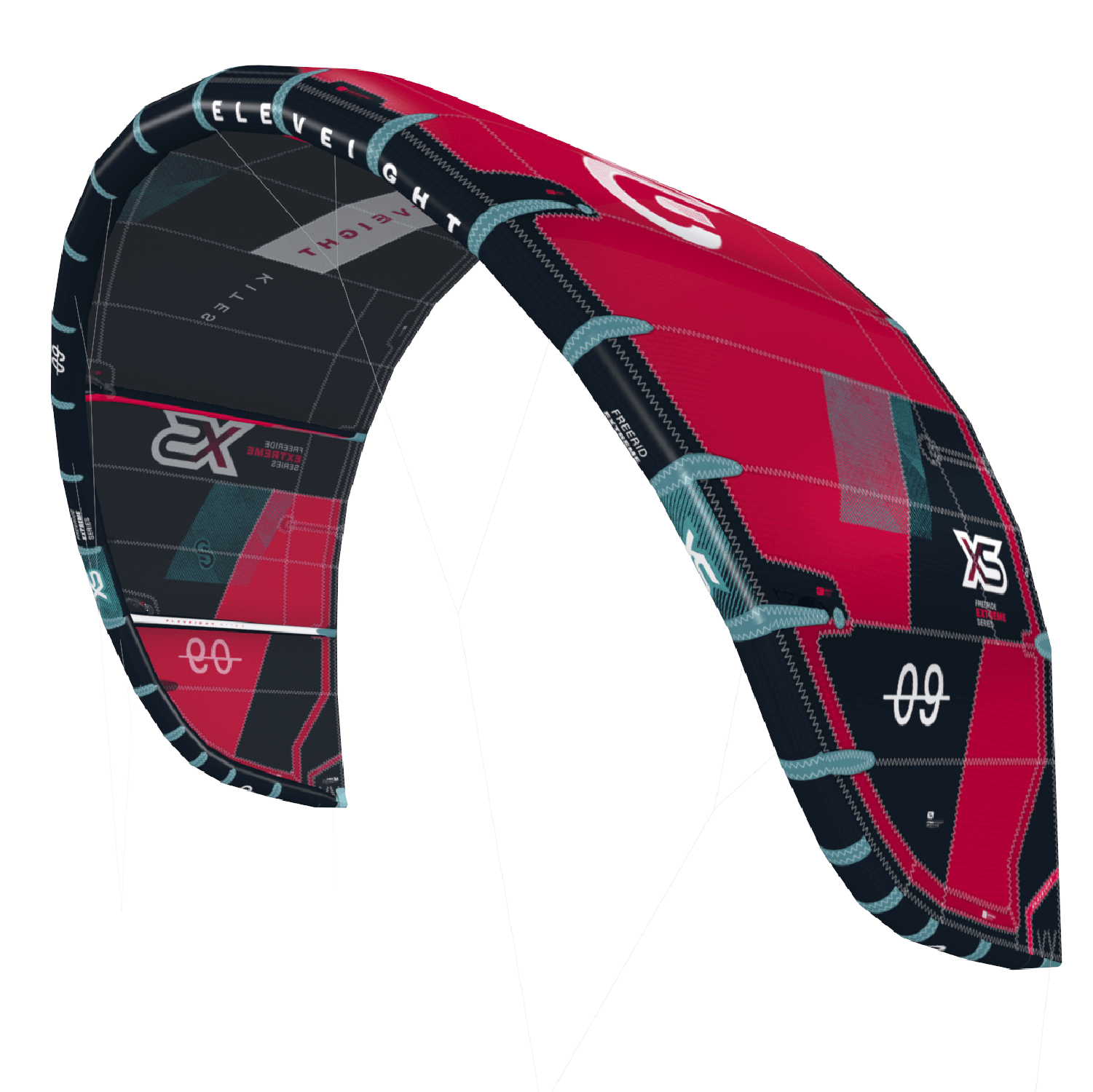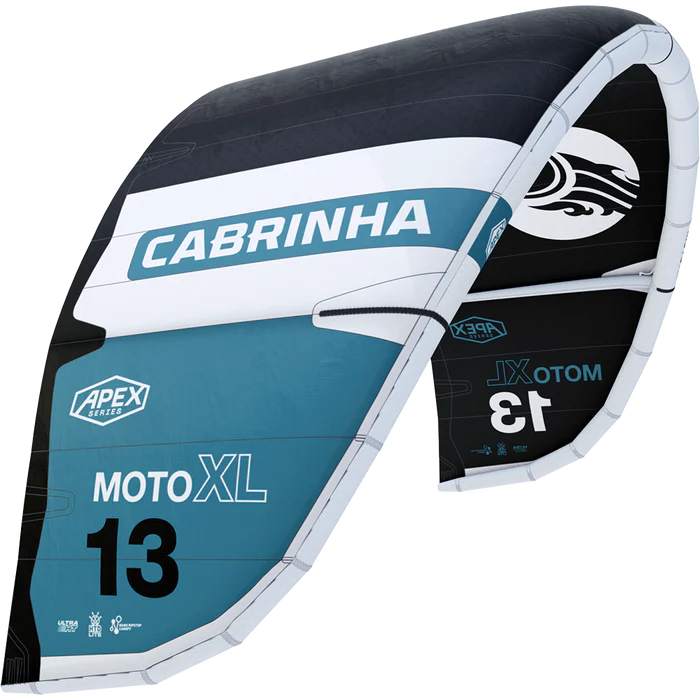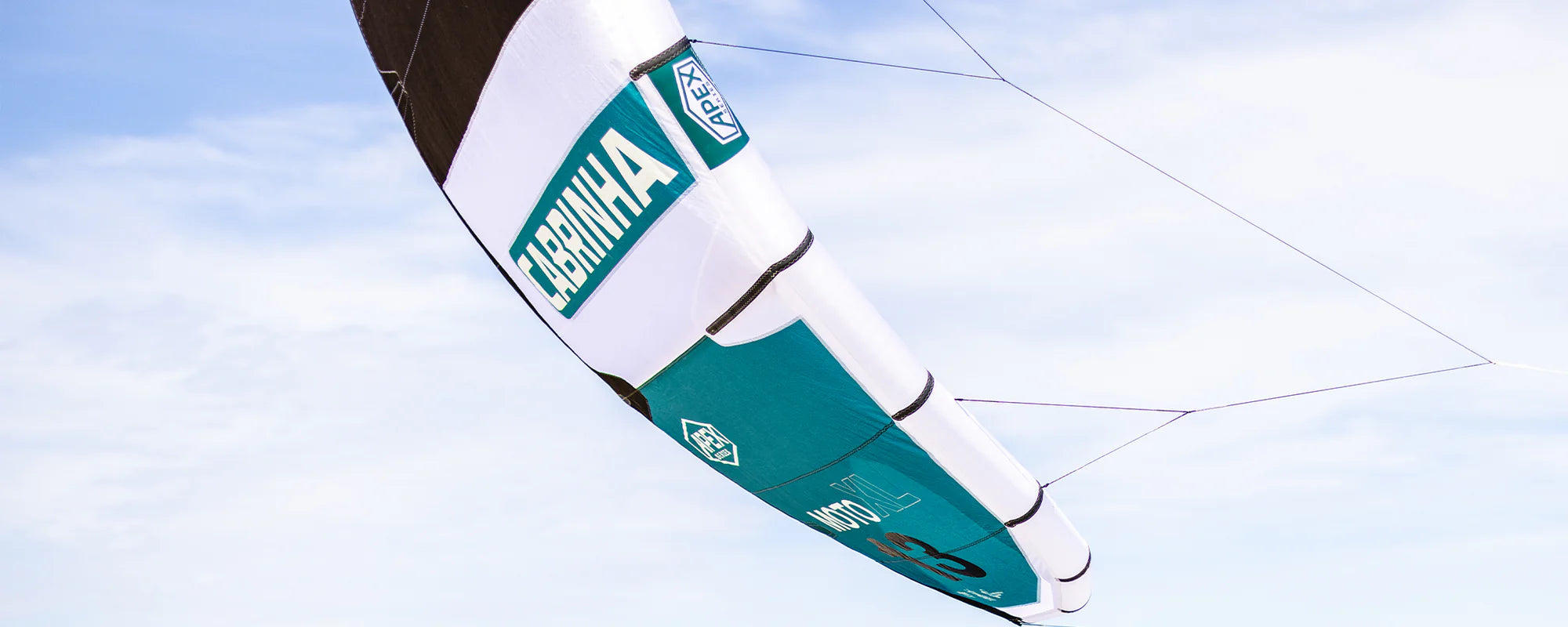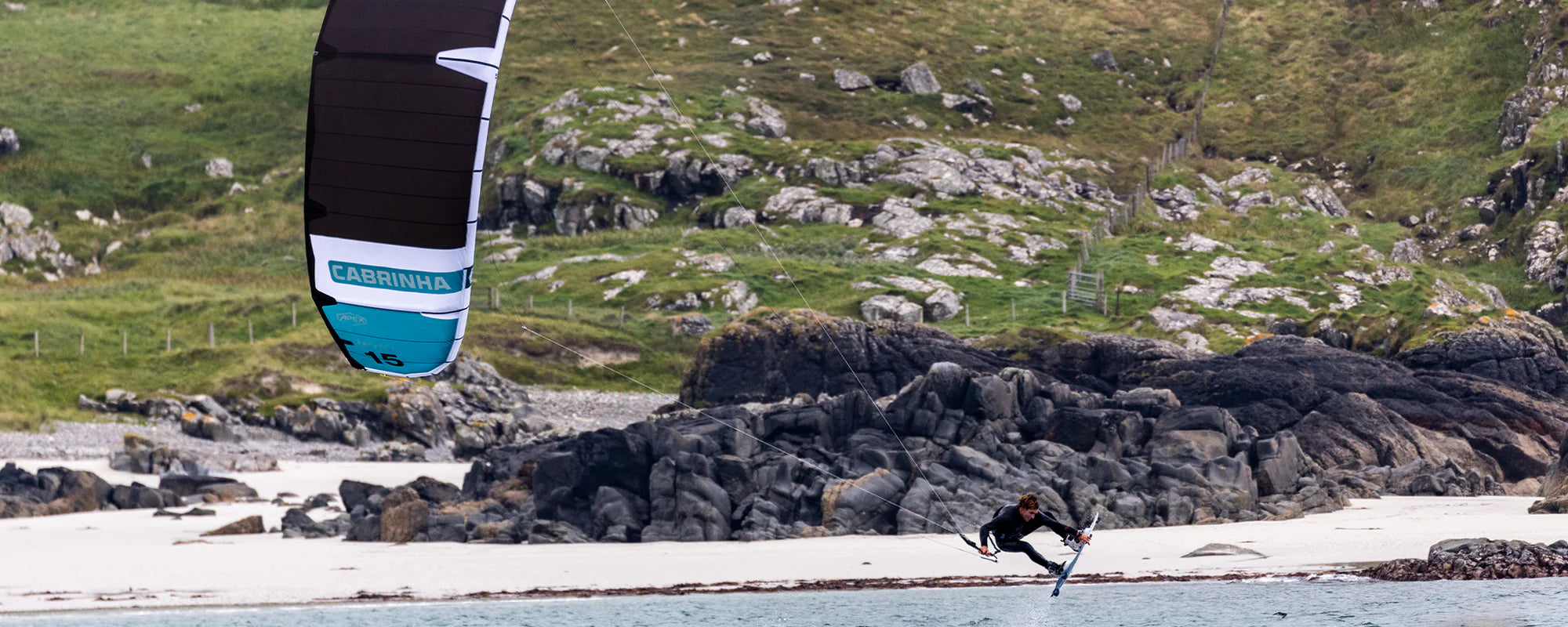Selecting the Proper Kite and Size for Snow Kiting

Kites
Choosing the Proper Kite Size
Static vs. De-Powering Foils - Know the Difference
Recent advancements in technology have brought us foil kites that are capable of de-powering(often called "sheeting") Foils with de-powering systems are far superior to "static" quad line kites for many reasons.
De-powering foils have a control bar that has a hole drilled in the middle to allow the center lines to pass through the control bar and into your harness. This allows the control bar to "float" on the center lines and takes all the pull off your arms and grip and into the harness. Pushing the bar away from you decreases power.
Pulling the bar towards you increases power. Not all quad lines are capable of de-powering it is an integrated design of the control bar and the kite.
Where Will You Be Sailing?
The snow kite size you use will depends on the surface. Snow Kiting on hard packed snow or ice takes a lot less power than deeper powder conditions. The best snow kiting is generally on a frozen lake as you have unobstructed wind flow and you know there is nothing under the snow like branches or rocks.
Consider Your Skill Level
The next consideration is your skill level. Also consider your athletic ability. The larger the kite the more power it generates and more demanding it is for you physically. If you are just getting started, the best choice is the smallest kite that will produce enough power to move. It is essential not to be overpowered, not just because it's obviously safer but, less power is easier to manage. No one kite will cover the entire wind range, so start with a smaller kite and then get a larger kite later.
Consider Your Weight
You should also consider your size. The bigger you are, the more sail you will need to pull you around. If you are over 190 lbs, you should be looking at 9.0 sq. meter kites to start with. Under that you can go with a 7 sq. to start with.
Getting Started
The Hydra 350 Trainer Kite will get you started. 3.5 sq. meters of power and it's a static quad line kite with a control bar, Complete with the bar, lines, and kite backpack, it's only $369.99!

































